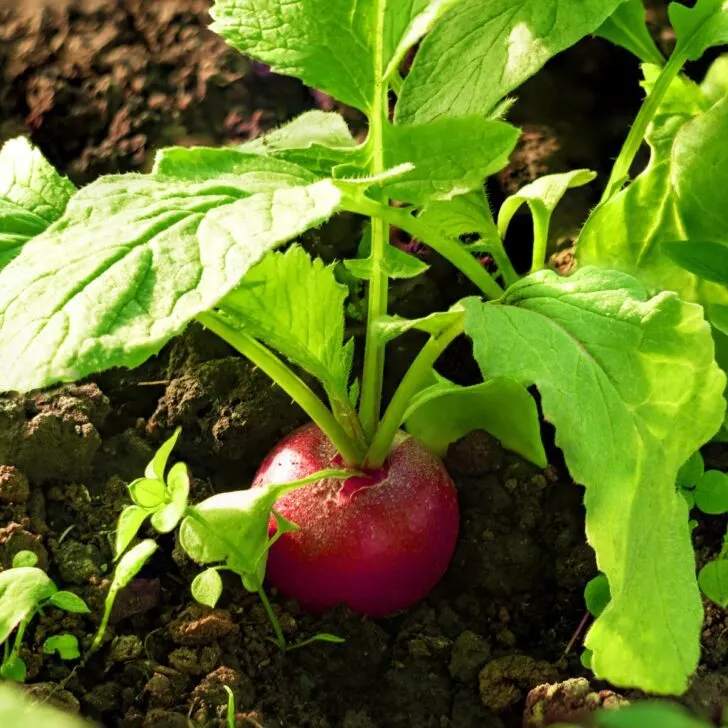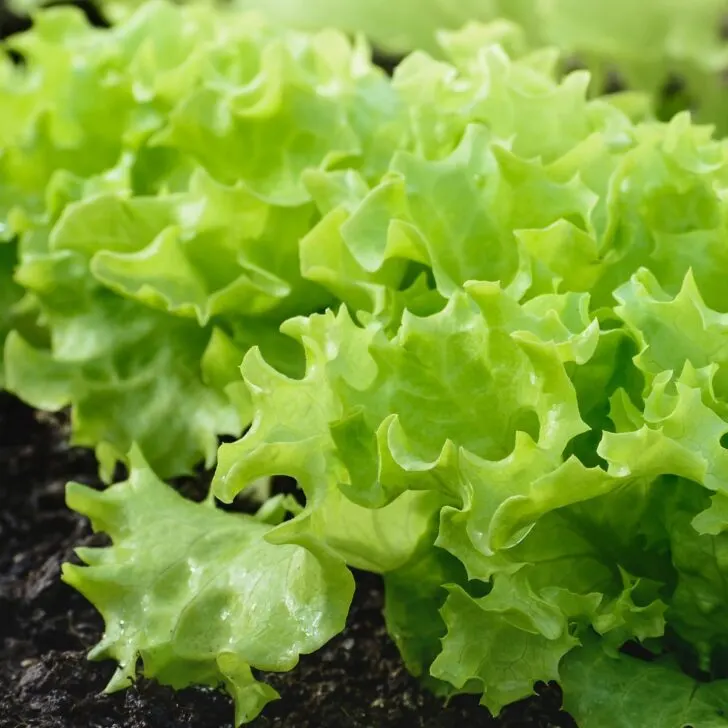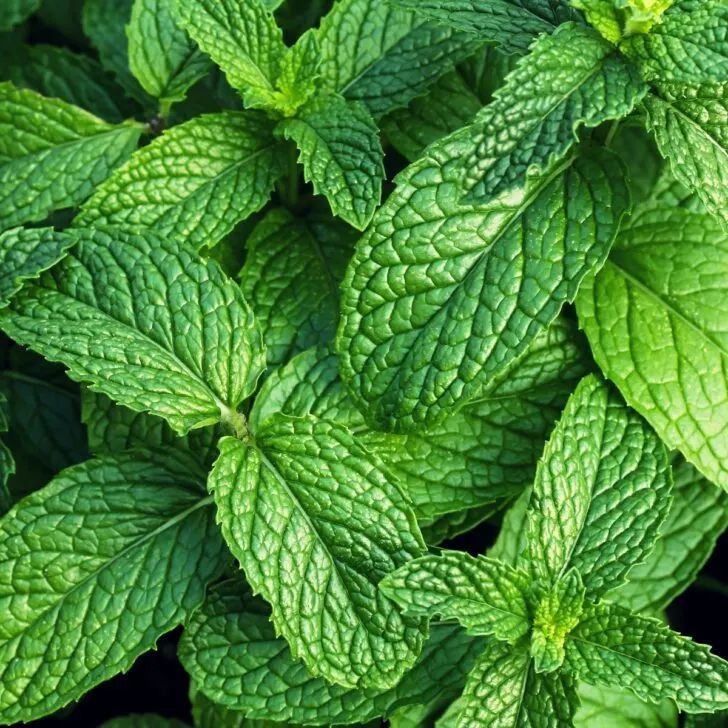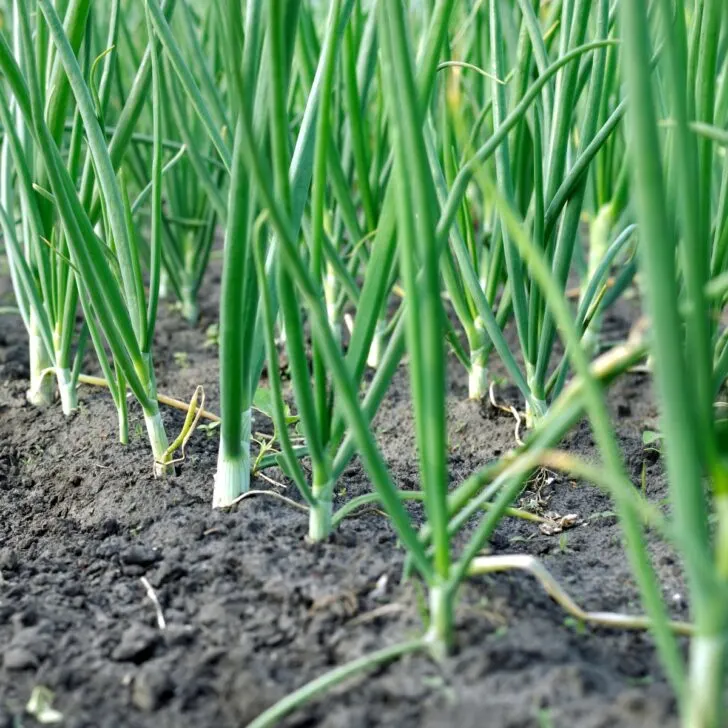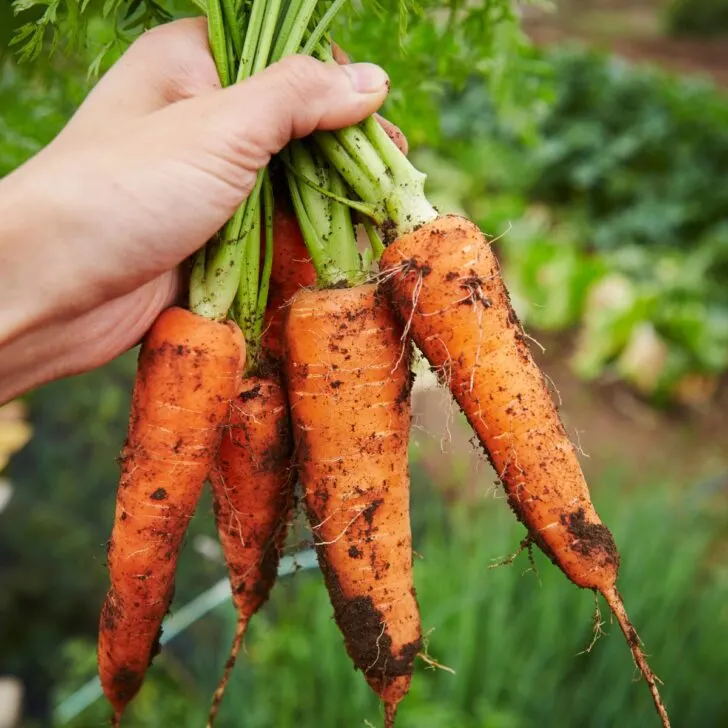Learn how to grow basil from seed, and enjoy this fresh herb all summer long! I'll show you how to care for basil from planting to harvest!
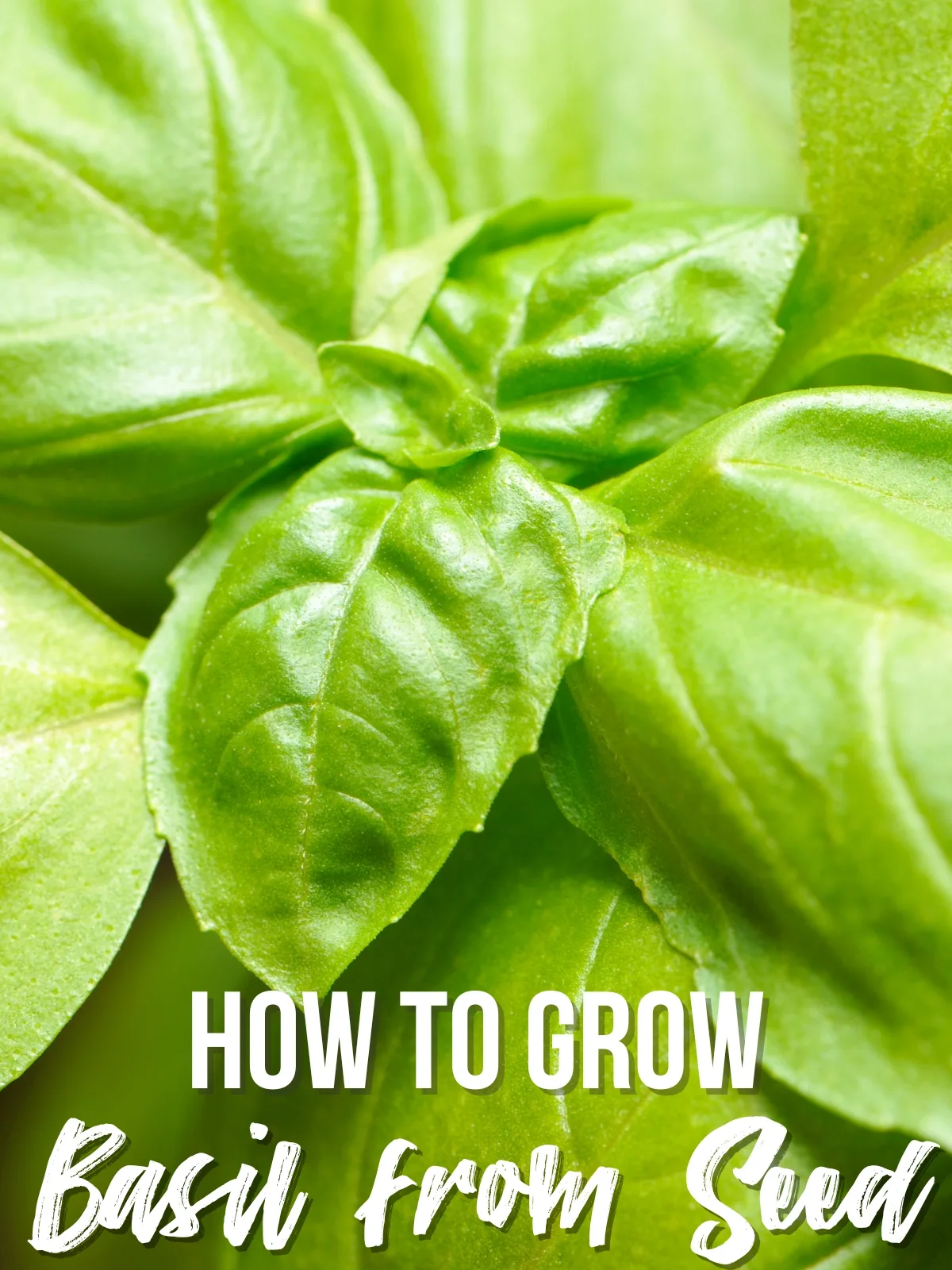
There's nothing better than picking a few leaves of fresh basil from a plant you grew yourself! I used to buy those hydroponic basil plants from the grocery store and stick them in a glass of water, only to have them wilt and die after a week. So disappointing!
Then I started buying those big, bushy basil plants from Trader Joe's. You know, the ones they put right by the door so you can smell them as you walk in?
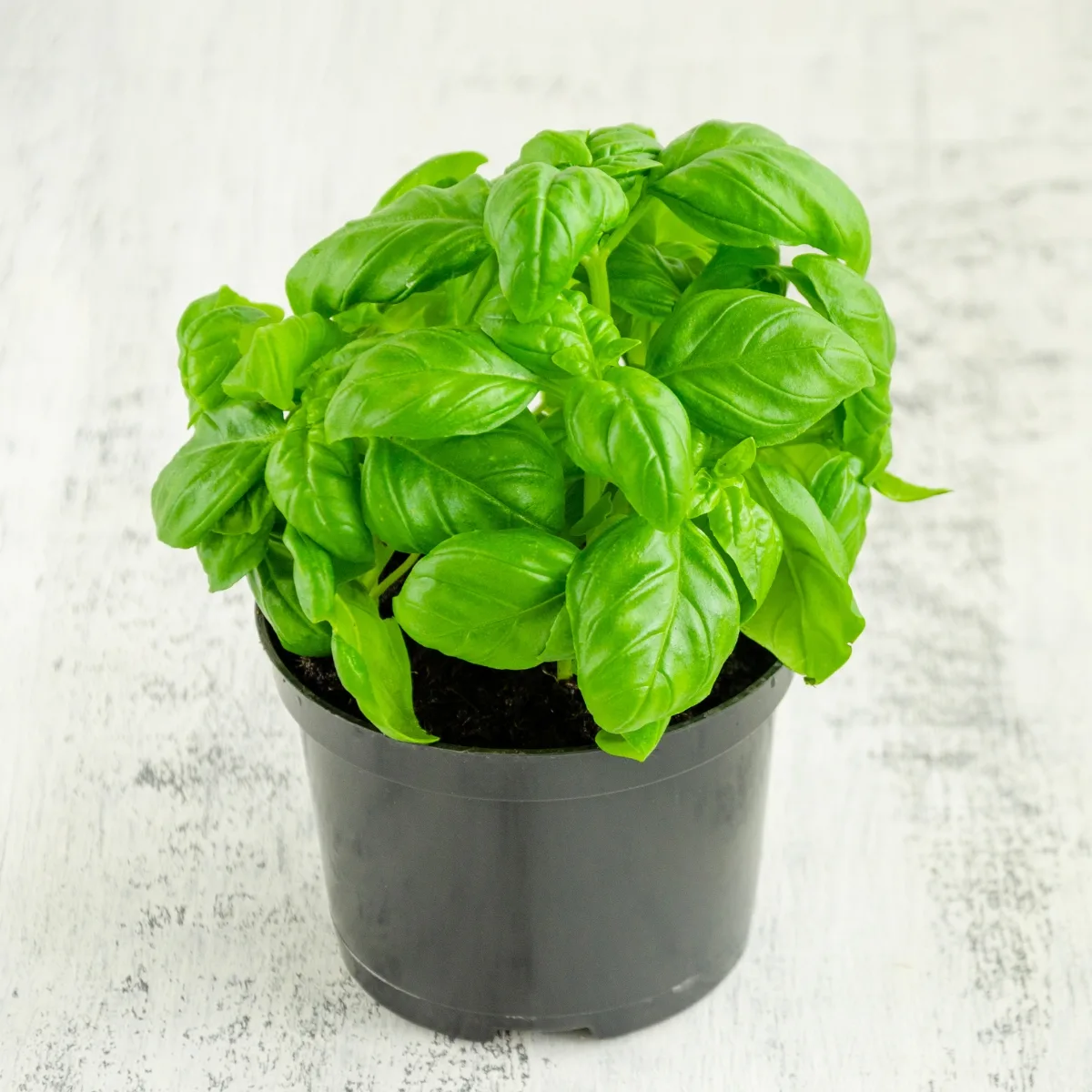
But the reason why they're so bushy is because they cram a TON of seedlings into one pot, and it dies quickly from overcrowding. While I could repot each one, I don't have enough space on my plant stand for an entire field of basil!
After all that trial and error, now I grow my own basil from seed. That way, I can control the variety and the spacing, and I'm much more invested in the plant's health and well-being.
Here's how to care for basil plants and enjoy an amazing harvest this summer!
This post contains affiliate links for your convenience. Purchases made through these links may earn me a small commission at no additional cost to you.
Things to Know about Growing Basil
Basil is a fast-growing annual herb that is the staple of many recipes. It's happy growing outdoors or indoors in a sunny location or under a grow lamp. The more daytime light basil gets, the better it produces loads of flavorful leaves.
The plants are small, maturing between 8 and 24 inches tall and about 1 foot wide. Basil does not like cold weather, and temperatures below 40°F can damage the tender leaves and stalks, turning them into an unappetizing black.
Basil Varieties
You can find seeds for countless varieties of basil differing in flavor, color, and uses. Growers divide basil into four categories: sweet, purple-leaf, small-leaf, and scented.
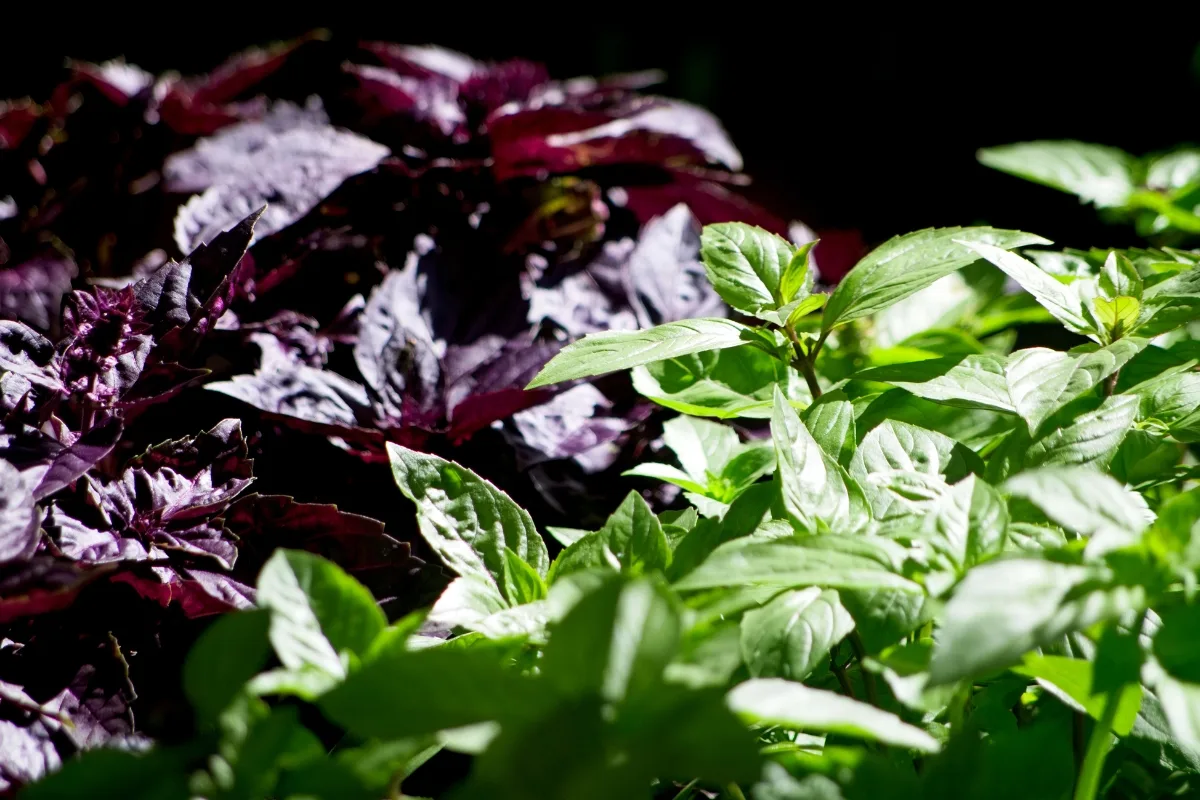
- Sweet basil varieties are slow to bolt and among the best for cooking, pesto, and drying. The plants grow to two feet tall and include ‘Genovese’ and ‘Napoletano.’
- Purple-leafed basil is often used as a fragrant ornamental in the landscape, and cut stems make a lovely accent in flower arrangements.
- Small-leaf types are early-flowering dwarf plants growing 8 to 12 inches tall. They make attractive, fragrant borders around vegetable and flower beds, and the small, aromatic leaves and flowers can be used as a garnish.
- Scented basil varieties include spicy, citrusy, and exotic tastes and scents that can add an extra dimension to dishes from stir fry to ice cream. ‘Lemon Basil,’ ‘Cinnamon Basil’ and ‘Lime Basil’ are popular options.
You can also sprout basil seeds as a micro-green ready for harvest in about ten days, adding flavor and nutrients to salads, green smoothies, soups, and sandwiches.
How to Plant Basil Seeds
Ready to grow your own basil? Here's what you need to know!
What do basil seeds look like?
Basil produces these small black oval seeds after it flowers. They can be tricky to hold, so I like to dump the packet into a small bowl and scoop out each seed individually.
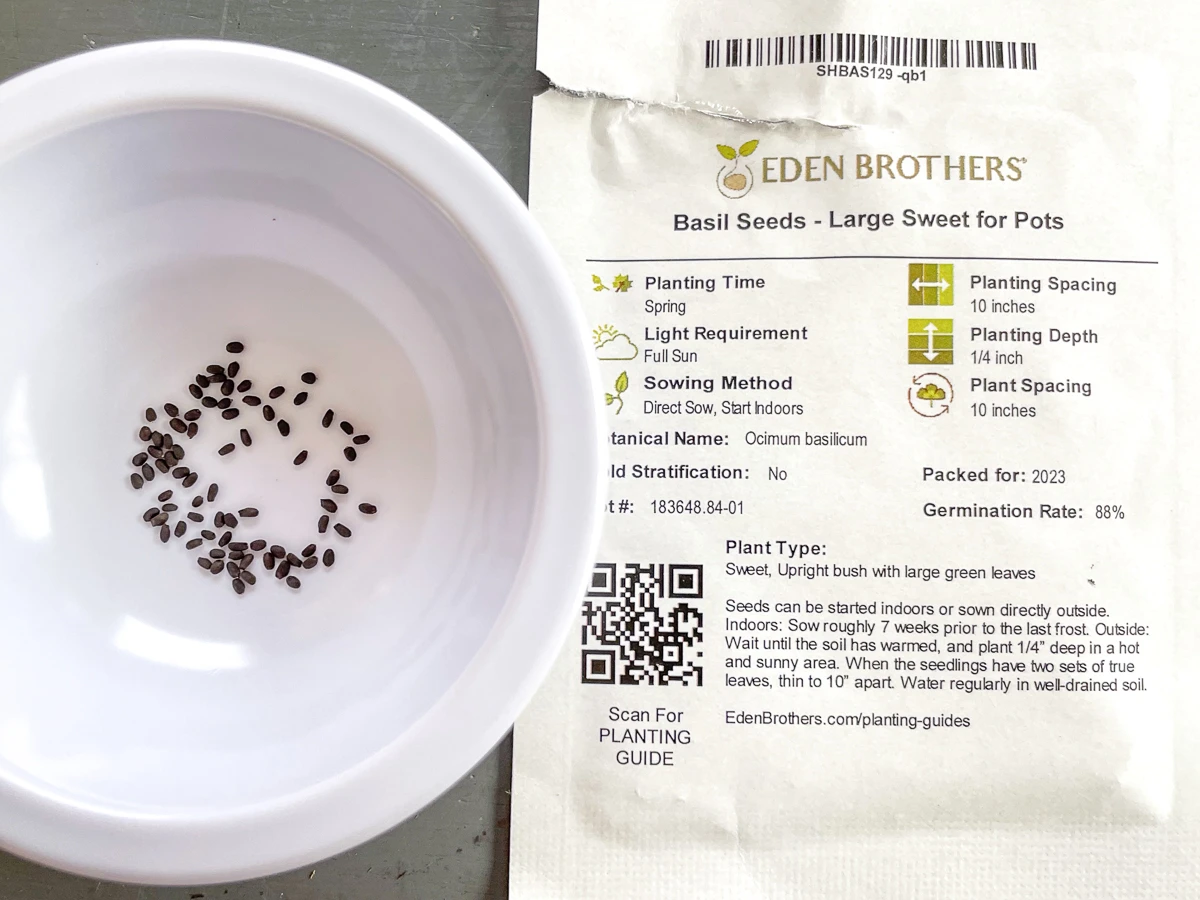
When to plant basil seeds indoors
Basil plants grow quickly from seeds and are best started indoors and transplanted outside after frost danger passes. Start the seeds in seed trays or small pots six to eight weeks before transplanting.
Planting basil seeds
Sow the seeds ⅛ inch deep in a damp seed starting mix. I don't need a full tray of basil plants, so I'm sprinkling a few seeds in a small peat pot. Cover the seeds with a light layer of soil and press gently on the surface to ensure good seed-to-soil contact.
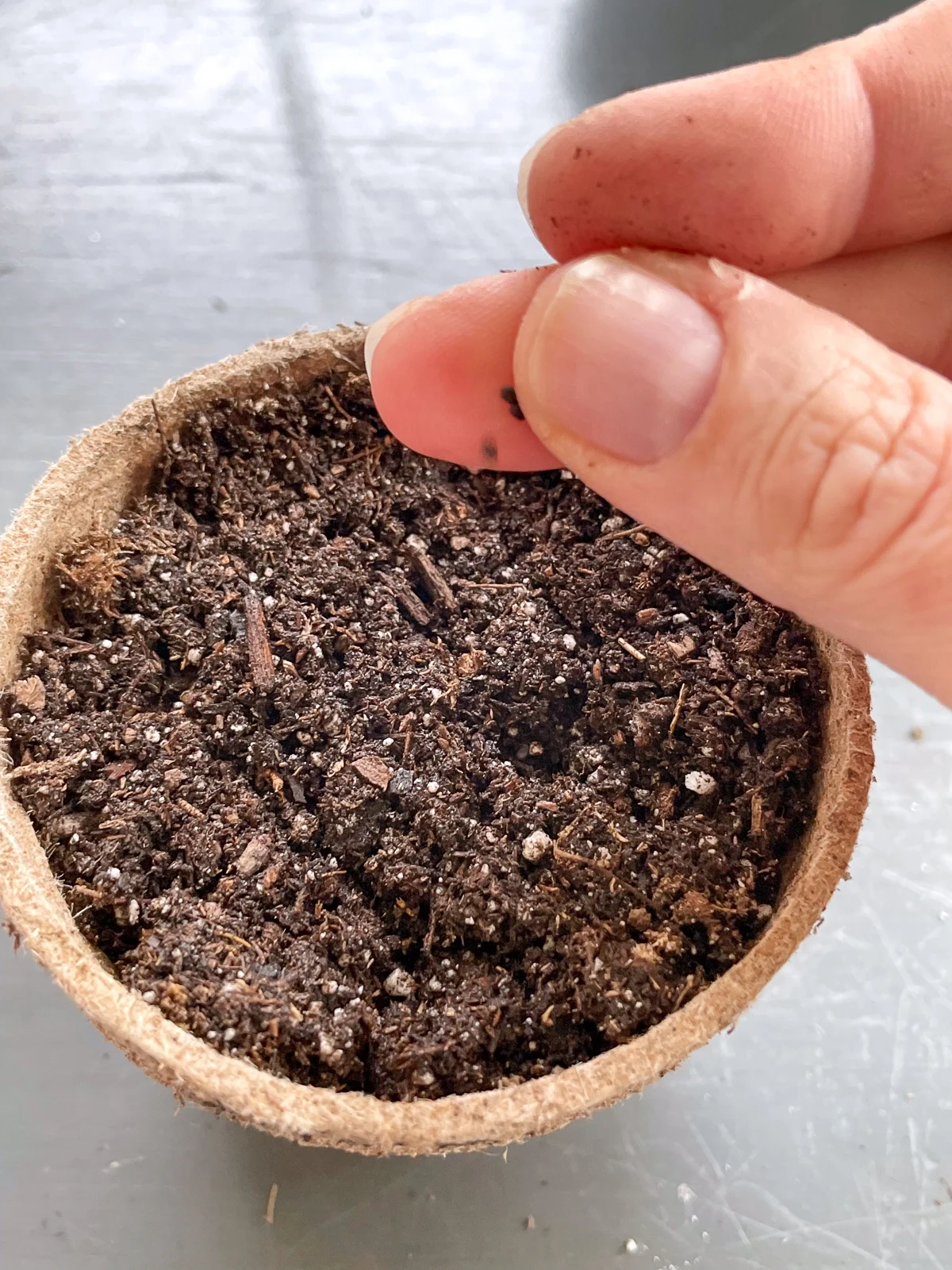
Give the seeds a light spray of water to start the germination process. This pump sprayer produces a fine mist instead of a heavy stream, which can accidentally push the seeds to the edges of the pot.
I like to plant all my vegetables and herbs in individual peat pots rather than seed trays. The peat pots allow for more root growth, so I don't have to pot them up to a bigger size right away. Best of all, you can just plant the entire thing in the ground to minimize root disturbance, because the peat will break apart over time!
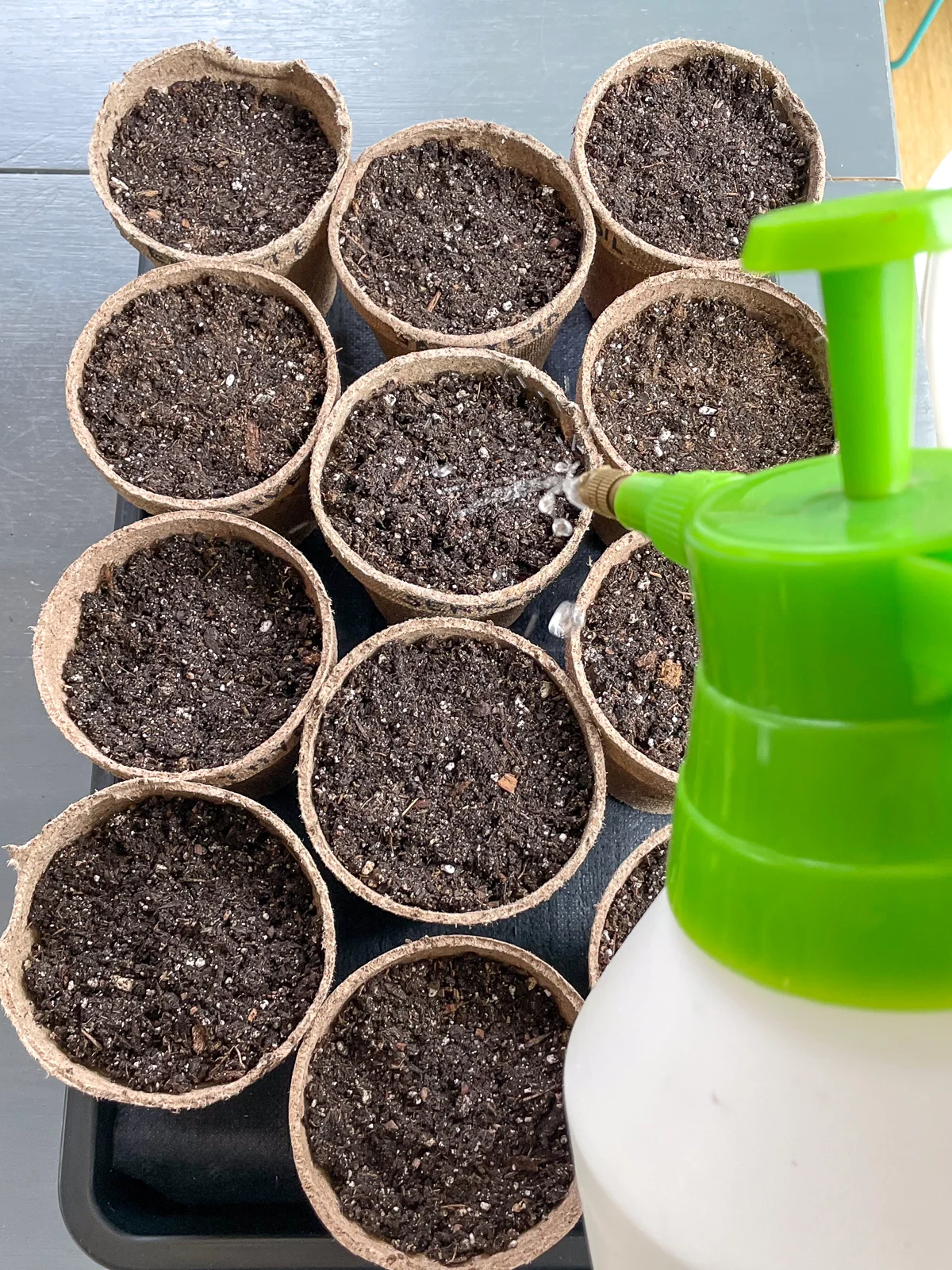
Cover the tray or pots with a humidity dome or plastic wrap to trap moisture in the soil. Put the pots in sunlight or under grow lights, as basil seeds require light to germinate.
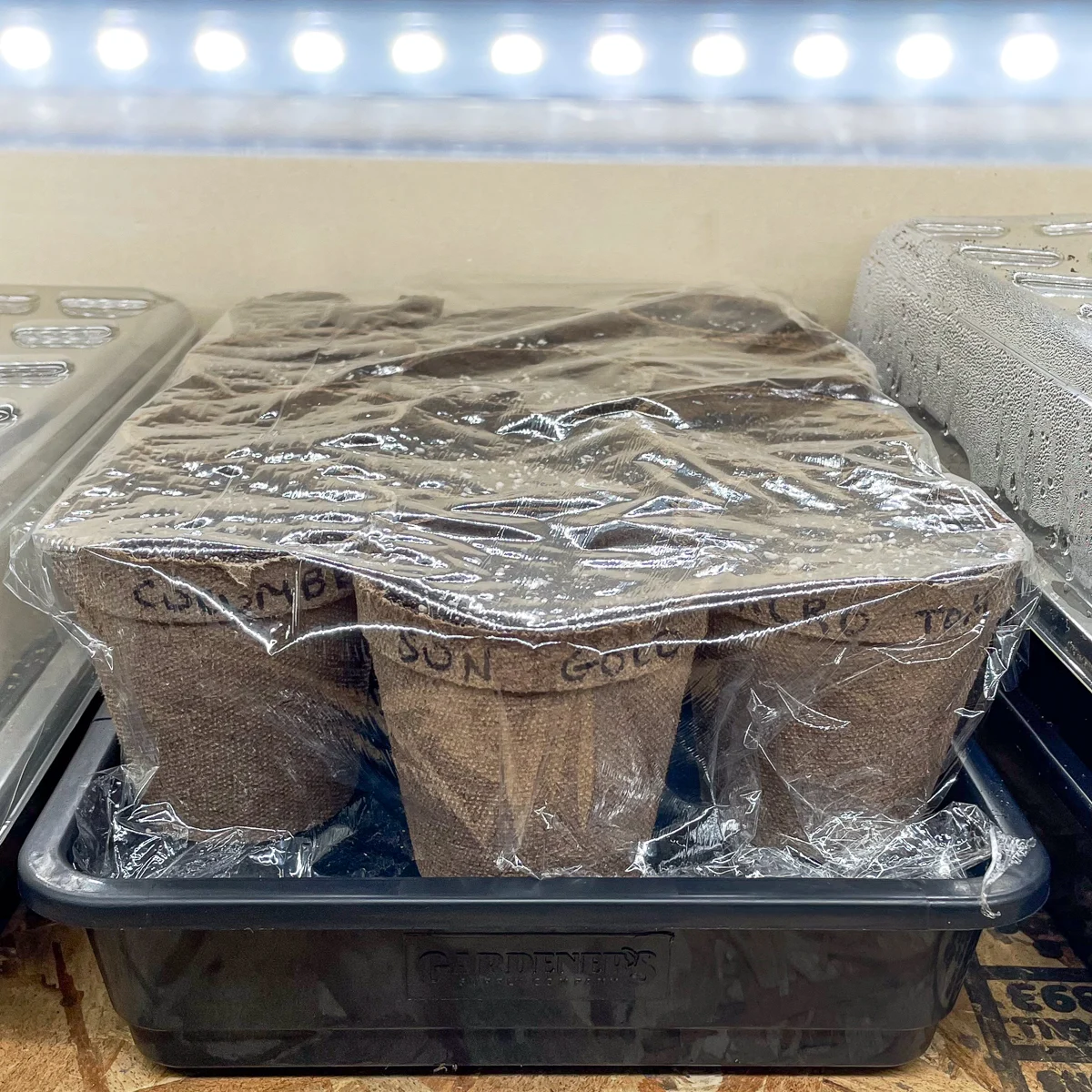
Keep the soil moist and at an even temperature between 65 to 75°F using bottom heat from a seedling heat mat if necessary. These pots are on shelves under grow lights in our furnace room, where they get plenty of residual heat.
Basil seeds germinate in 6 to 14 days. After the seedlings emerge and have put on their first few sets of true leaves, thin them to one plant per cell or 2-3 per peat pot. This will give the strongest ones plenty of room to grow without fighting for nutrients or light.
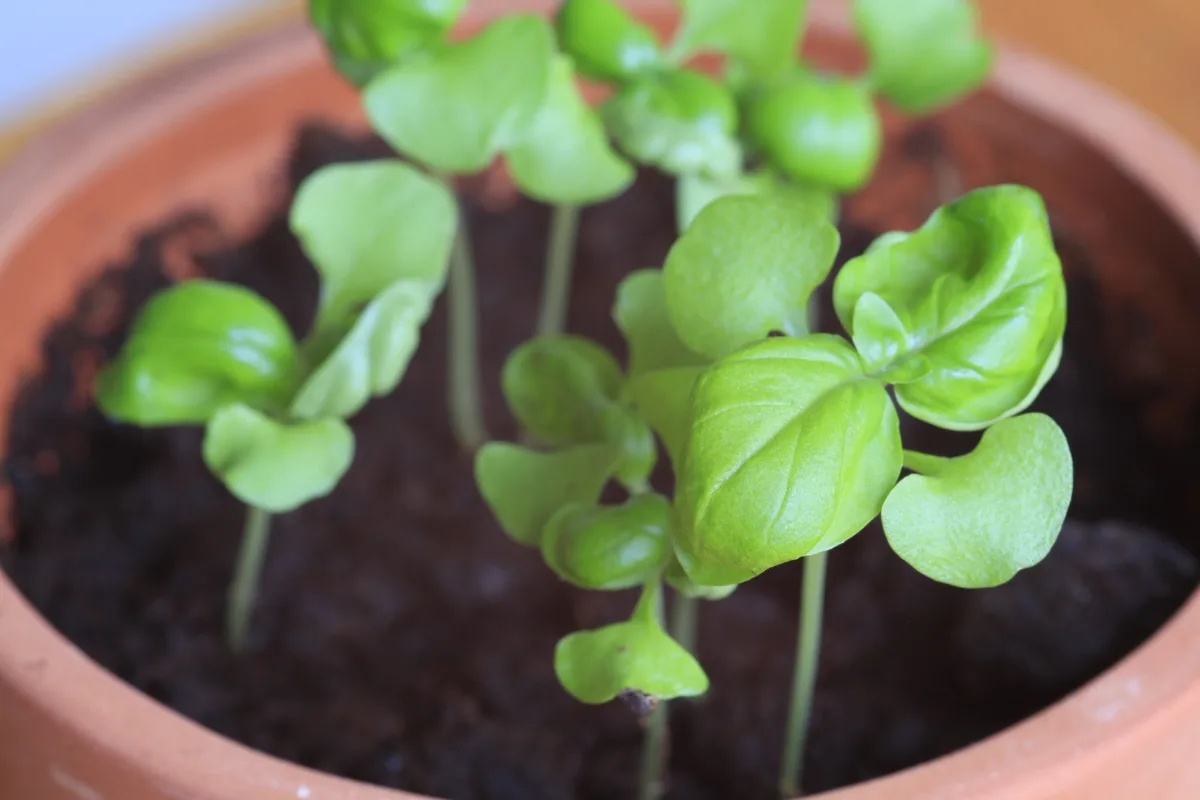
Transplant the seedlings outdoors into prepared garden beds or large containers from April through June when soil temperatures warm and frost danger is over.
How to Grow Basil from Cuttings
Starting basil from cuttings is an economical way to grow many basil plants quickly. You can take cuttings from growing basil plants, or try rooting a fresh bunch that was recently harvested for the farmers market.
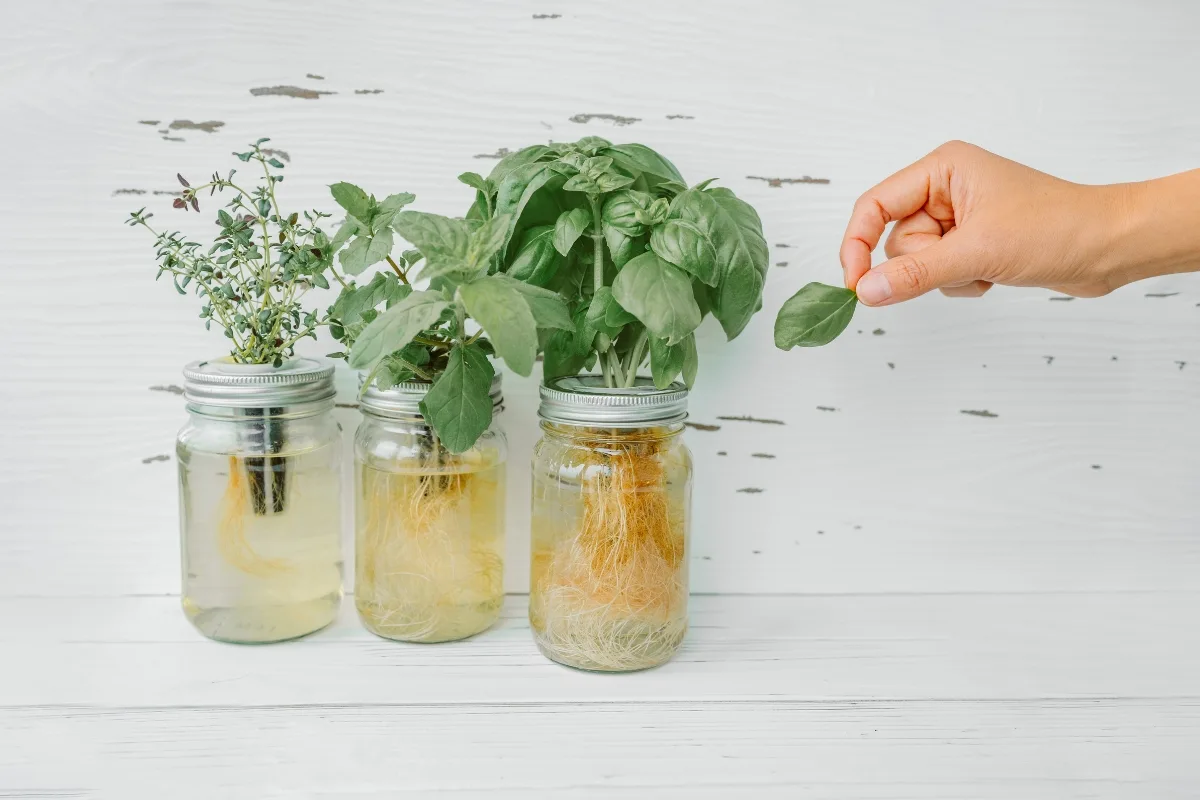
You can root basil cuttings in either water or soil as follows:
- Snip a 5 to 6-inch stem tip from a fresh basil branch using a clean pair of scissors.
- Cut at a 45° angle just below a leaf node.
- Strip the leaves from the bottom one-third of the stem.
- Immediately put the bare part of the stem into a clear glass of filtered water. If you use chlorinated tap water, let the chlorine evaporate for 24 hours.
- Alternately, you can plant the bottom third of the stem in seed starting mix in 4-inch pots.
- Keep the containers in bright, indirect light and transplant the cuttings when the roots are 1 inch long if rooted in water or 6 inches tall for potted plants.
How to Plant Basil
Transplant basil into the garden when the daytime soil temperature reaches 70°F. Choose a site with full sun exposure and excellent soil drainage.
Dig or till about 1 inch of high-quality compost or well-aged manure into the ground to provide nutrients and drainage. If planting basil in containers, ensure they are filled with fresh, well-draining potting mix.
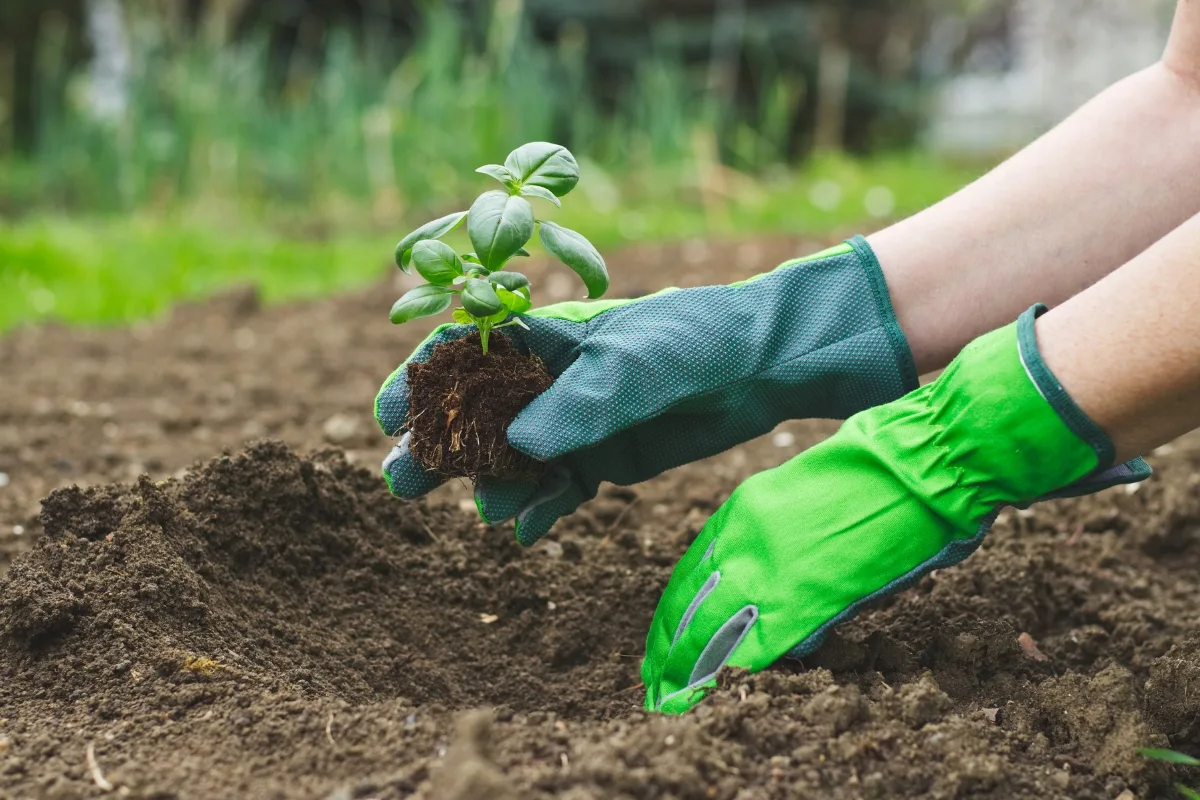
Basil plants need even, regular water and good air circulation around each plant. Space plants 12 to 18 inches apart for air movement, and consider using drip irrigation and mulch to keep the soil moist.
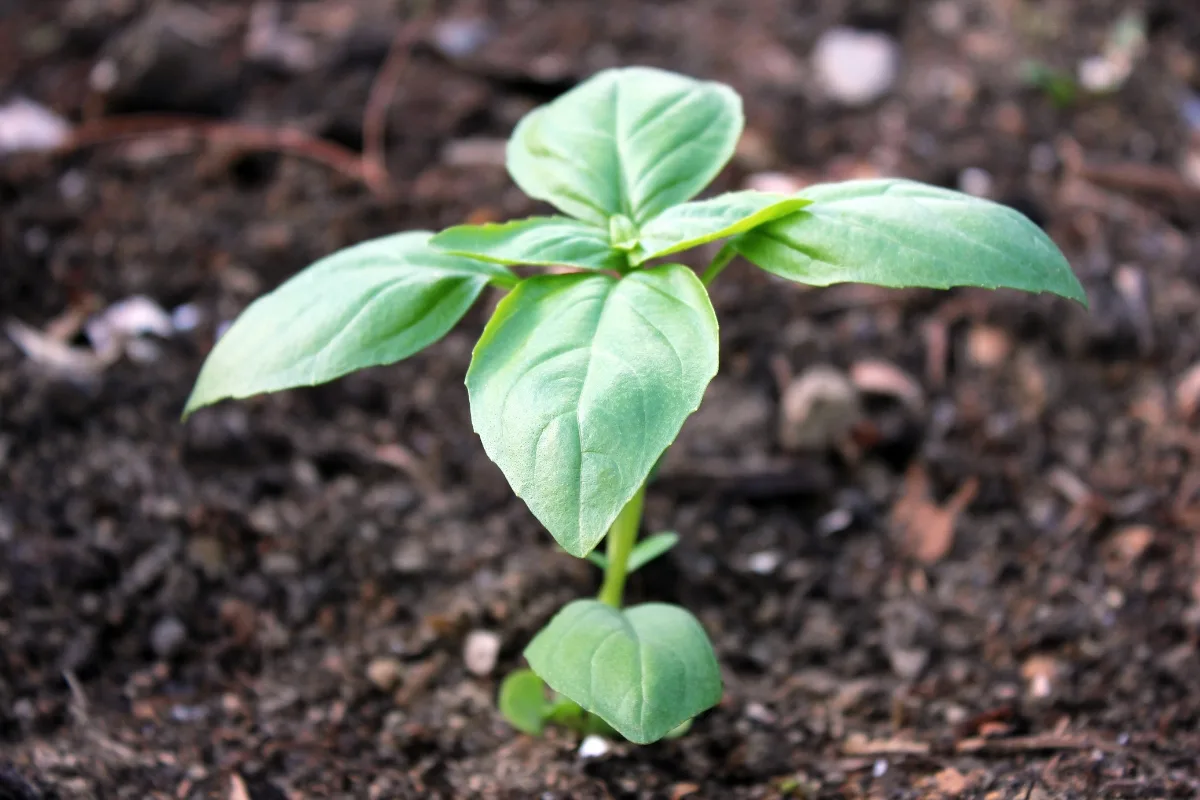
When transplanting, pinch out the central stem tip at the top of each plant to stimulate bushy lateral growth. The plant will send out two stems on either side of the cut, giving you more leaves to harvest!
Basil Plant Care
Your work isn't done when you plant your basil in the ground! Here's how to keep your basil plant happy and healthy over the entire growing season.
Fertilizer
Fertilize the plants every two weeks with a high-nitrogen fertilizer mixed according to package directions and watered into the soil. Potted plants need more frequent fertilizing because the nutrients drain out of the soil when watering. I've had good luck with these fertilizer spikes that you stick into the soil.
Watering
Basil loves moisture, but it's crucial to keep the soil evenly moist but not soggy. Mulch around the base of the plant to keep moisture in the soil, especially in containers.
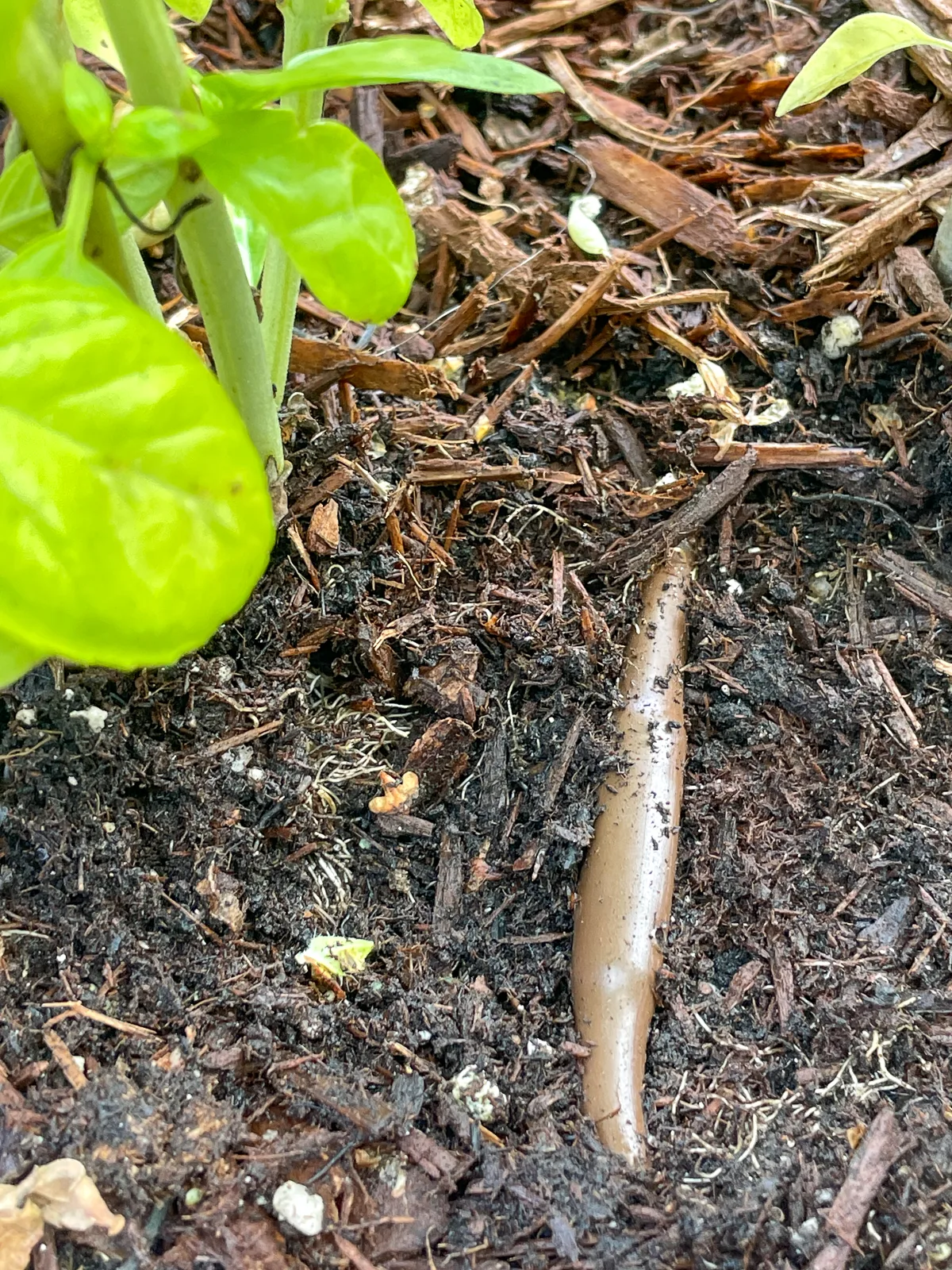
My basil is growing in this deck railing planter in full sun. It receives daily water from drip irrigation, which is hidden under mulch so the moisture doesn't evaporate too quickly.
Harvesting
Harvest basil leaves and stems regularly, starting when the plants are about 8 inches tall. Cut the stem instead of picking individual leaves, right above a node. Keep at least four leaves at the bottom of the stem so the plant can regrow.
You can see here how cutting the stem created more branching. I harvested the top just above a set of leaves, and the basil plant responded by growing two new stems in its place!
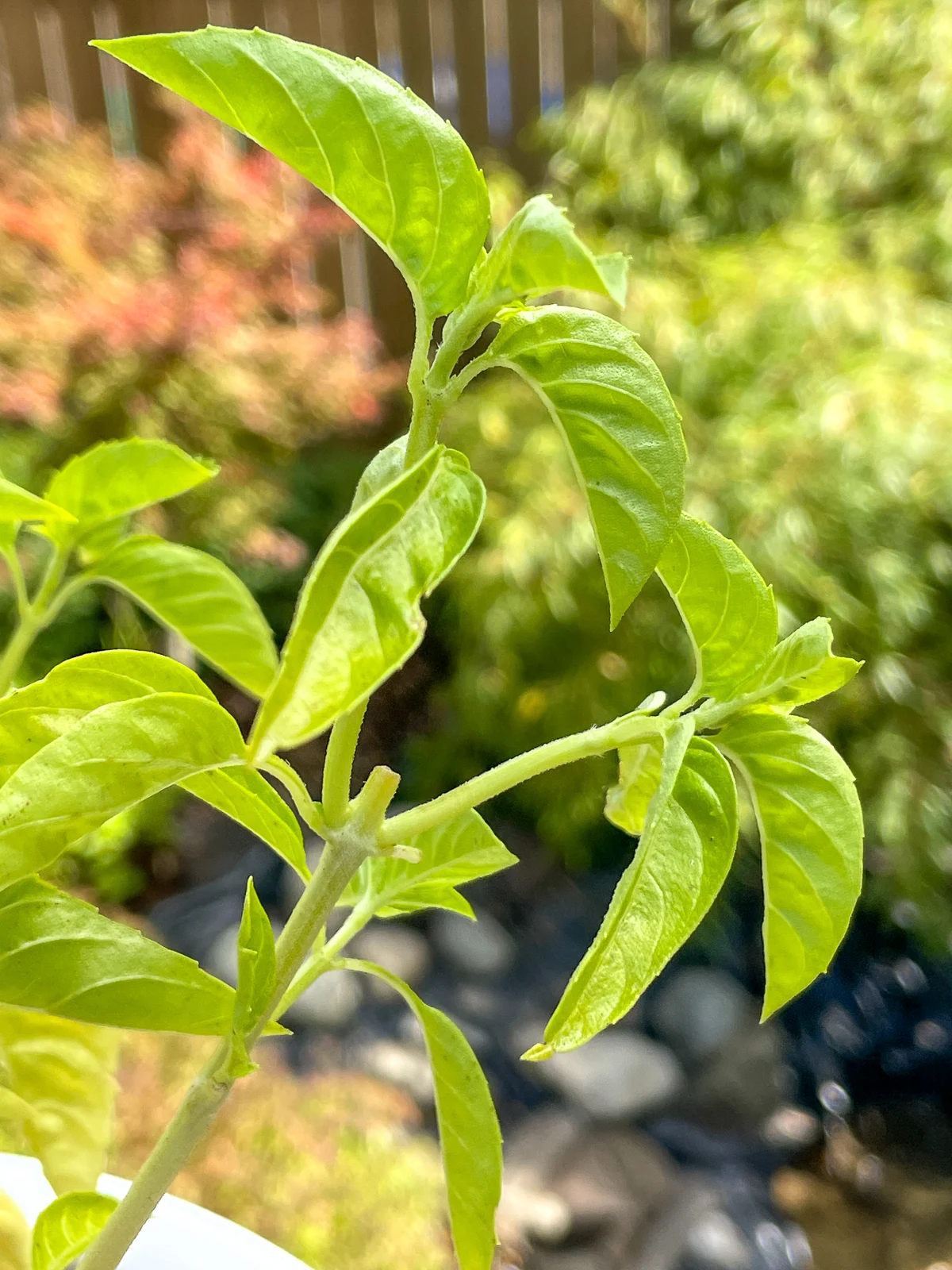
Harvest leaves before flowers develop for the best flavor and texture. Flowering stops leaf growth, so you'll want to pinch out any buds quickly.
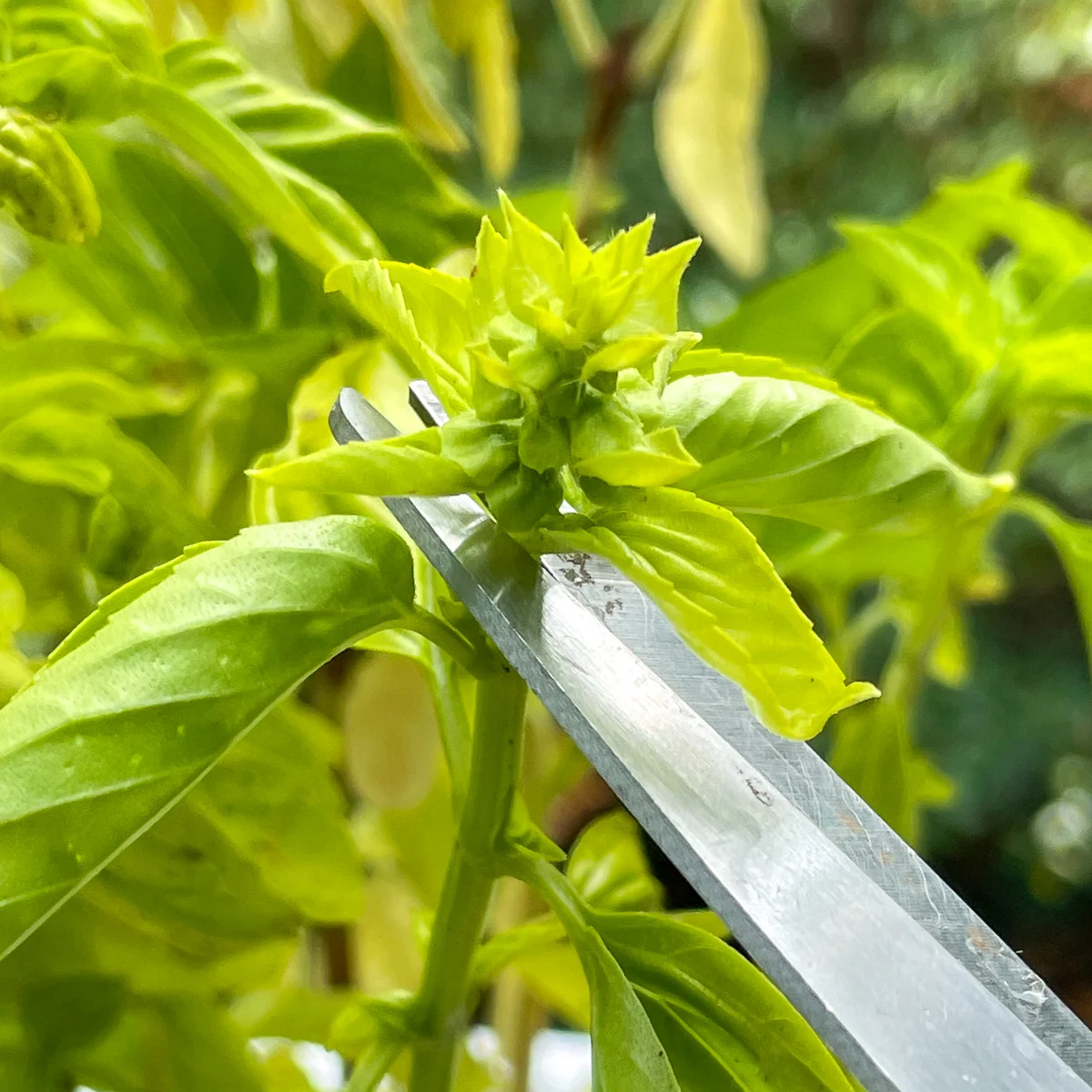
Toward the end of the season, I like to leave a few flowers on the plants. Harvesting basil seeds is really easy, and you can save them to plant again next year!
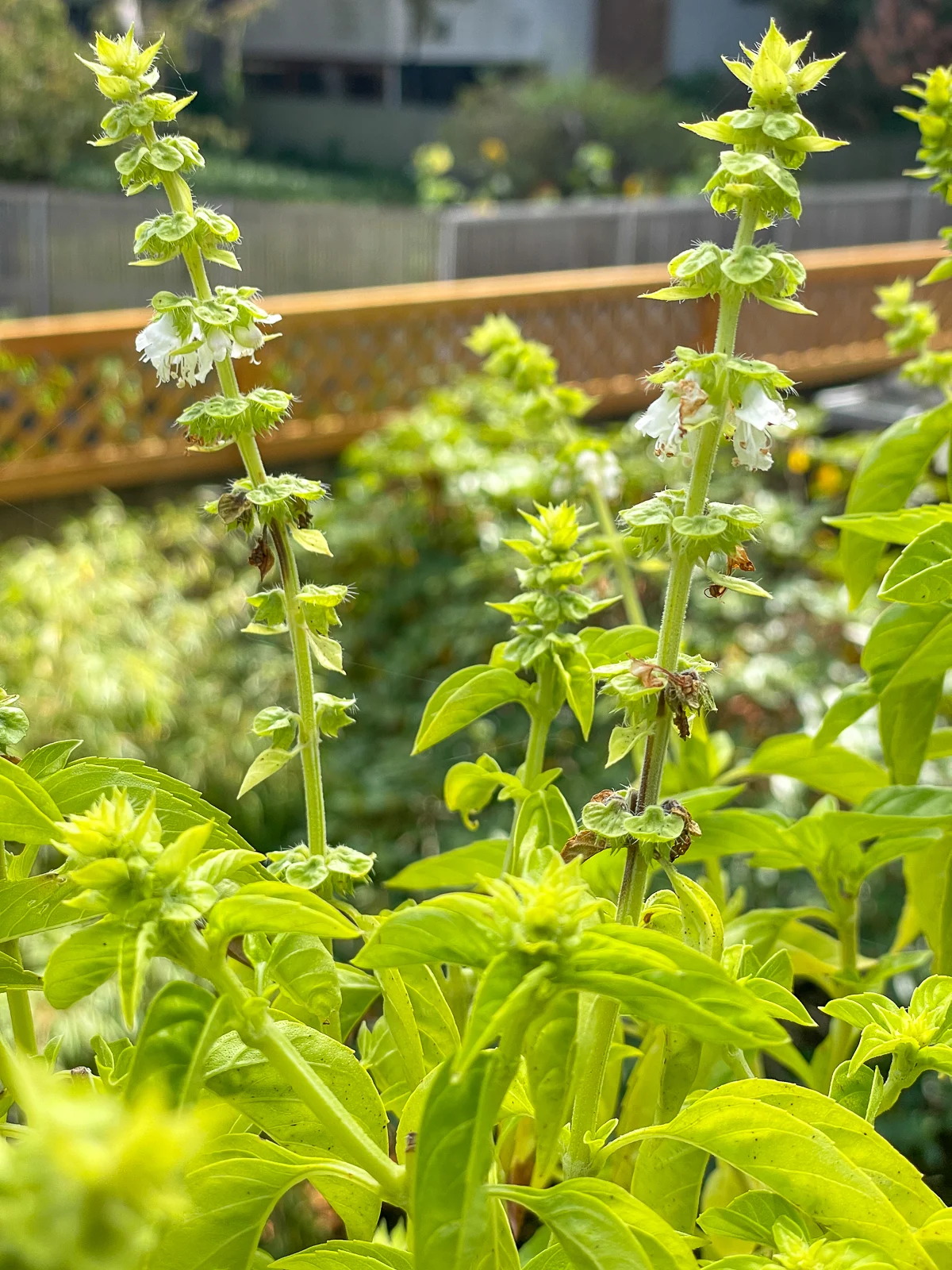
If you notice that your basil plants are becoming less productive, you can plant new crops to keep the harvest going longer. This is my second batch, and it's slowing down at the end of September now that the light is decreasing and temperatures are dropping.
Preserving
Preserve basil by tying together small bunches and hanging them for about a week in a dry, shady place away from direct sunlight. Store dry leaves in jars with lids.
Another way to preserve basil is to puree it in a blender with olive oil and salt to make pesto, then freeze it in small jars or ice cube trays.
Now that you know how to grow basil from seed, you can harvest an endless supply every summer!
Check out these other edible plants you can grow from seed!

